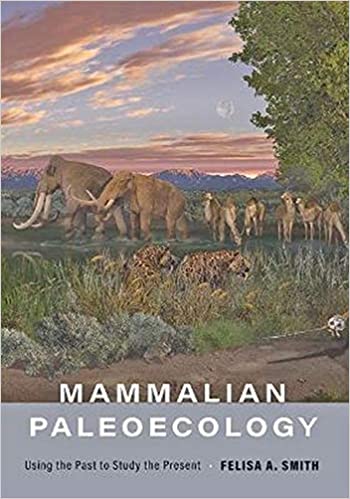Mammalian Paleoecology: Using the Past to Study the Present
By Felisa A Smith

The blurb for this book states that it will “profoundly affect the way paleontologists and climatologist view the lives of ancient mammals”. However, not being either a (professional) palaeontologist or climatologist, but having read it with interest, I am not sure that is correct. Anyone with an active interest in what the interactions of ancient mammals and their environments tell us about the presentand future will be interested in this well-written and engaging book.
Originally, the science palaeontology was never about ecology. From the beginning, it hasalways involved the study of fossils and the reconstruction of evolutionary lineages of organisms. However, it was perhaps a function of its own success that, as more fossils were found and described, scientists became aware that it was possible to reconstruct elaborate ecosystems involving the plants, animals and geology they were discovering. The field of palaeoecology developed in this way, such that the study of the interactions between organisms and their environments across geologic timescales became a legitimate and important field of study.
The author, Felisa Smith, is something of an expert on palaeoecology, having co-edited Foundations of Macroecology: Classic Papers with Commentaries. In this book, she broadly considers extinct mammals in a (palaeo) ecological context, arguing much like James Hutton that the past is key to the present. However, it is her insight that mammals, which display adiverse range of life strategies and therefore ecological characteristics, are ideal through which to view the fossil record.
In this way, the book broadly has six main areas of concern.
- It reviews the history, major fossil-hunting figures, and fundamental principles of palaeoecology, including stratigraphy, dating and taphonomy.
- It discusses the importance of mammal body size, how to estimate size, and what size and shape reveal about ancient organisms. (Felisa is also co-editor of Animal Body Size: Linking Pattern and Process across Space, Time, and Taxonomic Group.)
- It explains the structure, function and utility of different types of mammal teeth.
- It highlights other important methods and proxies used in modern palaeoecology, including stable isotopes, ancient DNA and the analysis of fossil dung heaps (which seems a lot more pleasant than looking at extant ones).
- It assesses non-traditional fossils.
- It contains several case studies describing how the fossil record informs the scientific discussion on manmade climate change.
Notwithstanding the frequent use of graphs and equations as explanatory tools, this is an excellent read, presented with a light touch. I would recommend it to anyone who wants a little more than just a popular review of dead mammals. As such, it is well worth getting a copy.
Felisa Smith is a professor of ecology and evolutionary biology at the University of New Mexico. She is also the co-editor of Animal Body Size: Linking Pattern and Process across Space, Time, and Taxonomic Group and Foundations of Macroecology: Classic Papers with Commentaries.
Mammalian Paleoecology: Using the Past to Study the Present, by Felisa A Smith, Johns Hopkins University Press (2021), 280 pages (hardback), ISBN-13: 978-1421441405